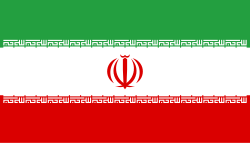Bachtijárí
| Bachtijárí | |
|---|---|
| Populace | |
| 3 000 000[1] | |
| Země s významnou populací | |
Čahármahál a Bachtijárí Chúzistán Isfahán Lorestán Kohgíluje a Bójer-Ahmad | |
| Jazyk(y) | |
| Bachtijárí dialekt, perština | |
| Náboženství | |
| ší'itský islám | |
| Příbuzné národy | |
| Íránské národy |
Bachtijárí jsou íránský národ, který žije v provincie oblastech Čahármahál a Bachtijárí, Chúzistán, Isfahán, Lorestán, Kohgíluje a Bójer-Ahmad v Íránu. Jazykově jsou jim nejvíce příbuzní Lúrové.[2] Jsou spřízněni s Peršany a jinými íránskými kmeny ve svém okolí. Dnešní kultura a mytologie Bachtijárí je pevně zakořeněna právě v íránské kmenové kultuře. Bachtijárí patří k skupině íránských jazyků, které spadají k indoevropské větvi.[3][4]
Reference
- ↑ Bakhtyari (people) [online]. Dostupné online. (anglicky)
- ↑ http://www.ethnologue.com/language/bqi
- ↑ http://www.britannica.com/EBchecked/topic/49583/Bakhtyari#tocBiblio
- ↑ Archivovaná kopie. looklex.com [online]. [cit. 2014-10-16]. Dostupné v archivu pořízeném z originálu dne 2014-04-06.
Externí odkazy
 Obrázky, zvuky či videa k tématu Bachtiarové na Wikimedia Commons
Obrázky, zvuky či videa k tématu Bachtiarové na Wikimedia Commons  Slovníkové heslo Bakhtiari ve Wikislovníku
Slovníkové heslo Bakhtiari ve Wikislovníku
Média použitá na této stránce
Flag of Iran. The tricolor flag was introduced in 1906, but after the Islamic Revolution of 1979 the Arabic words 'Allahu akbar' ('God is great'), written in the Kufic script of the Qur'an and repeated 22 times, were added to the red and green strips where they border the white central strip and in the middle is the emblem of Iran (which is a stylized Persian alphabet of the Arabic word Allah ("God")).
The official ISIRI standard (translation at FotW) gives two slightly different methods of construction for the flag: a compass-and-straightedge construction used for File:Flag of Iran (official).svg, and a "simplified" construction sheet with rational numbers used for this file.
